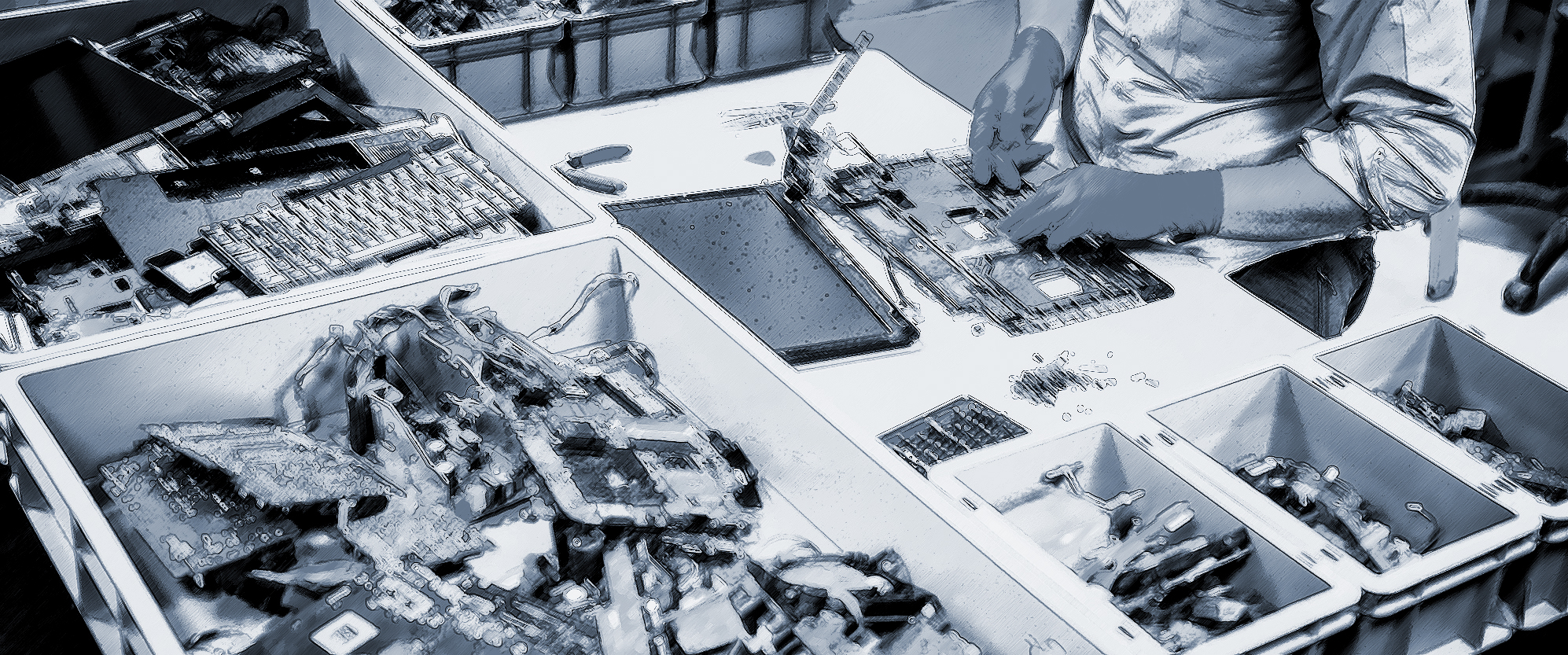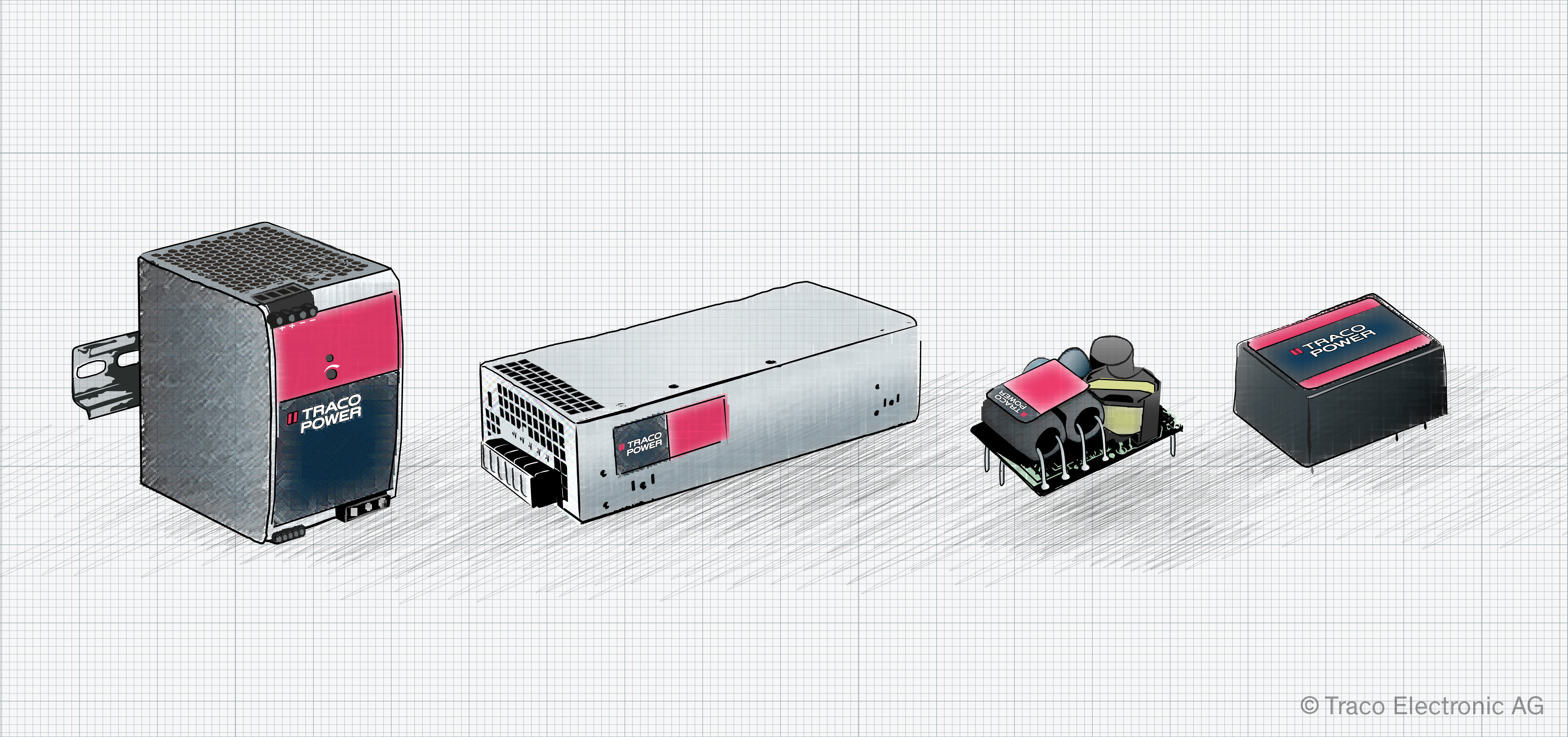Keeping Us Safe from Hazardous Substances in Electronic Waste
The Role of SCIP, REACH, RoHS, and EU Waste Framework Directive
The world runs on electronics. Without it, we’d have no smartphones, Wi-Fi routers, or Internet services, and the Traco’s Power Corner blog wouldn’t exist. At some point, these products reach the end of their useful life. Some fail. Others fall into disuse because there are no new software updates or security patches. This is the moment they turn into e-waste.
According to Earth.org, between 50 and 60 million tonnes of e-waste is generated annually – that’s equivalent to chucking out around 270 billion iPhones. The problem during recycling is that your 220-gram phone contains thousands of components weighing a fraction of a gram. How do you recover all the materials without exposing yourself to hazardous substances?
Hazards Around E-Waste Recycling
Recycling centers start by hand sorting e-waste, looking for what could be reused. After that, the rest is shredded and processed to retrieve the various materials. However, today’s systems can only recover around ten from 60 chemical elements, with the rest going to landfill.
And, for recyclers, it is challenging to know exactly what materials their staff are dealing with and what health risks they’re exposed to.

To tackle this, various regulations have been put in place. These include:
· REACH – This covers the Registration, Evaluation, Authorization and Restriction of Chemicals and has been around since 2007.
· RoHS – Now in its second incarnation, the Restriction of Hazardous Substances restricts use of certain materials in electrical and electronic products.
· EU Waste Framework Directive (WFD) – Defined to protect the environment and human health during the processing of waste containing hazardous substances.
· SCIP Database – A new database of products and the hazardous substances they contain.

What dangers lie in our electronics?
Most of us know the main hazardous substances hidden in our electronics. Both lead and cobalt spring to mind. Long-term exposure to lead can cause, among other issues, anemia, hypertension, and toxicity to reproductive organs. Cobalt can harm the eyes, skin, lungs, and heart and may cause cancer. And even copper can build up in the body and cause liver failure.
All of these materials are usually mixed together, so when electronics are shredded, it’s unclear what your staff could be exposed to and in what quantity.
Recording Hazardous Materials in Electronics
For manufacturers of electronics products, sub-assemblies, or components, it all starts with RoHS for equipment sold in the European Union. This directive bans using substances like lead, mercury, cadmium, and others. However, there are exceptions. For example, high-temperature solder currently still needs lead. These RoHS exceptions allow such materials to be used in concentrations above 0.1% weight by weight (w/w).
Since 2013, manufacturers must complete RoHS compliance testing. They are now also responsible for their supply chain and how they use these restricted substances. When creating their RoHS documentation, they also have to list which exceptions they’ve used.
The scope of REACH is broader, covering the use of all chemical substances across most EU industries. It requires that companies register used substances with the European Chemicals Agency (ECHA). It also maintains a candidate list of Substances of Very High Concern (SVHC), like carcinogens or those toxic for reproduction. If these are present in concentrations above 0.1% w/w, you’ll need authorization to use them.
REACH and RoHS are closely linked, and an eye should be kept on the SVHCs in case a substance is added to the list.
Once an Article, Always an Article
It’s easy to assume that because you’re building a product made of electronic components with tiny amounts of hazardous substances, you’ll not reach the 0.1% w/w threshold. But that would be incorrect. All of these regulations make use of the O5A rule – once an article, always an article.
For example, a diode may contain a small amount of lead, making up a tiny percentage of the substance of a power supply. But, because the diode was initially manufactured and sold as an article, it must be considered in isolation. If the diode contains more than 0.1% lead w/w, the product it is built into will need to document the exception in its RoHS certification.

New Documentation – The SCIP Database
With the introduction of the EU’s WFD comes a little more admin – the SCIP Database or “Substances of Concern In articles as such or in complex objects (Products).” Since 2021, all EU businesses and importers must upload their use of SVHCs in concentrations above 0.1% w/w. With all substances used recorded for every product manufactured, recyclers and waste operators will be better positioned to understand the risks they are dealing with.
However, this has caused a few waves in the electronics industry, with the VDMA, Bitkom, and the ZVEI (three German industry associations) listing a series of concerns with its introduction These range from the limited amount of preparation time given after the database went live, to the breadth and volume of data required.
Of particular concern are the pressures placed on small and medium-sized businesses, for whom data gathering and upload could require a full-time employee. With most electronics manufacturers using dual-sourcing to protect against component shortages, the effort can be considerable.
Traco Power’s SCIP Approach
In engineering, tackling issues like EMC or software testing early results in fewer issues later on. And it’s been the same for Traco Power when tackling SCIP. Despite having over 5,000 individual products, each containing more than 100 components, the team had registered SCIP reference numbers for all its products by mid-2021.
Our decision years ago to implement a Full Material Declaration (FMD) strategy made it simpler. We’ve been gathering information on SVHCs from all our suppliers, implementing proprietary data exchange formats in cases where FMD was unavailable.
Our customers also benefit from immense time savings when entering their products into SCIP, as the power supplies they’ve sourced from us are already listed.
If you’d like to learn more about our implementation of SCIP, feel free to get in touch with your regular Traco Power contact or partner.